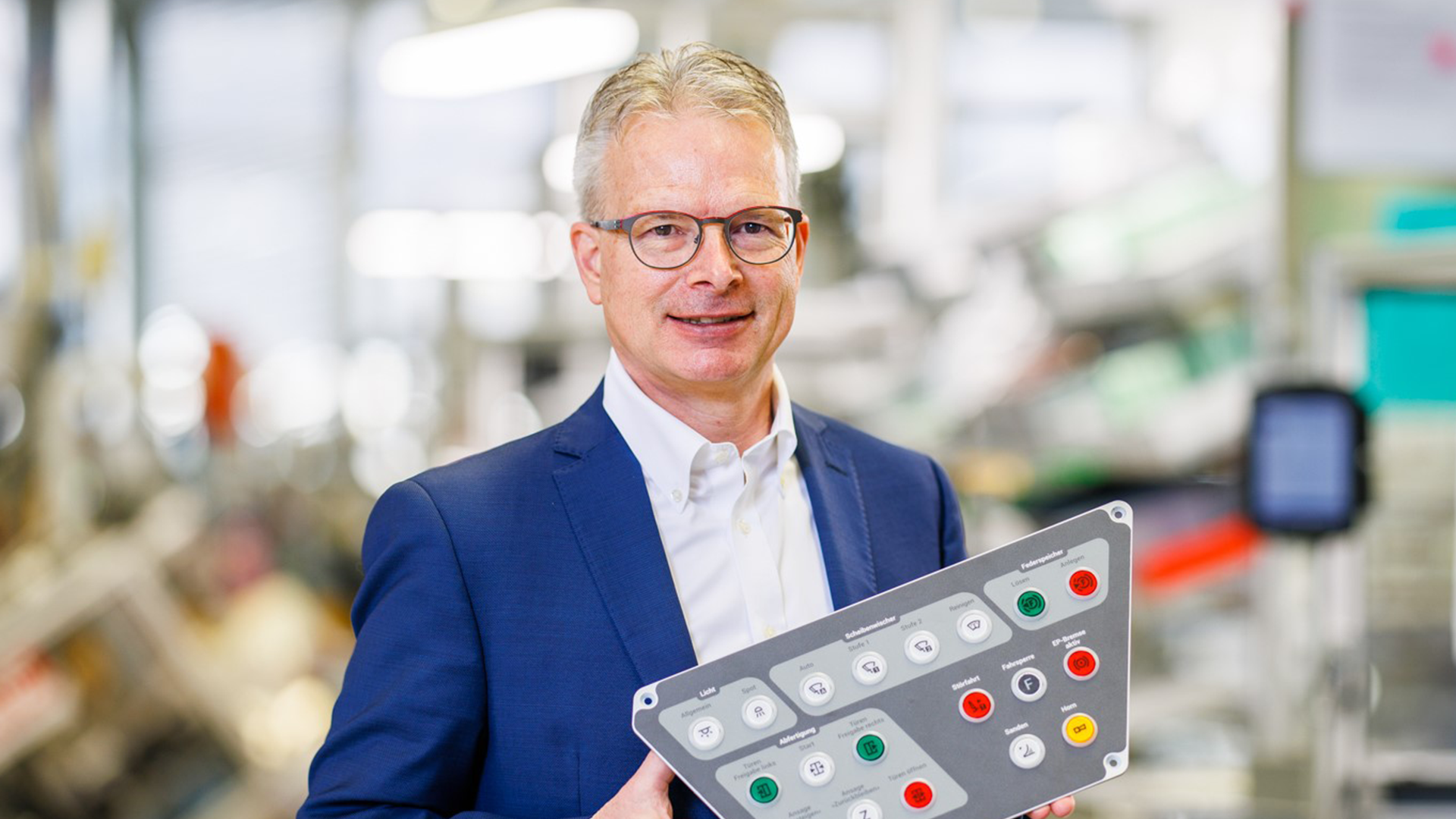
Mr. Loosli, what type of interfaces do you absolutely not like personally?
Anything that feels rubbery or sticky. It's strange to touch these types of surfaces; your finger sticks a bit and you can never really tell whether they're dirty or not.
What is important for the interfaces of your products?
We design user interfaces that meet certain command and notification requirements. They need to be ergonomic and intuitive, so that a tram driver, for example, can use them without having to look. Drivers need to be able to know as soon as they touch them which element they're using. The geometry of the operating element – specifically, the form – is more important than the material characteristics. The feedback that users get when they press a button is also important, such as a click or a beep. The most important thing is for them to know that the command has been carried out.
What are some of the daily activities at EAO?
We develop innovative, intuitive, and reliable mechatronic products that facilitate the interaction between people and machines. These include buttons, joysticks, and keyboards, for example, as well as complete operating systems, known as human machine interfaces (HMI). Our products are primarily found in public transport vehicles, machine engineering equipment, and specialized vehicles, like excavators, tractors, and fire engines – anywhere where durability and robustness are required. We are also involved in global sales and consultations. We have our own sales companies and distribution agencies in some 60 countries around the world, and we work as a manufacturer with international suppliers.
You're the second generation of your family to lead EAO. Why did you decide to join the family company?
It was based on the situation. In 1996, the second founding family decided to sell their stake in the company. I was working for a consulting firm at the time and traveling around Asia. When my mother decided to take over the entire company, I stayed here and joined the business, initially in product development. We had a clear vison: We wanted to move forward with the core business of human machine interfaces, so we gradually sold the company's other original products – transformers and rectifiers.
To what extent is tradition still important for the company?
We have remained in Olten because we have deep roots here – as a family and as a business. People know us. The proximity and the direct contact to our global customers and to our employees continues to be very important to us. This long tradition is part of our DNA. As a family firm, we also really value professional management, since are active in international markets. We feel competitive pressure and have to deal with market fluctuations and other global influences. The COVID-19 pandemic is just latest example, as the supply bottlenecks affected our company.
What are the key lessons your company has learned over its 75-year history?
The interaction between people and machines is a basic need. And our work will never truly be done. By focusing on this field, we have an excellent foundation and a long future ahead of us. Nevertheless, in our mature and saturated markets it is often difficult to judge as a specialist whether an investment is really worthwhile. We generally develop long-term products, and we want to be a leader in many applications. We have to watch the market very closely and assess for which of the many global customers we would like to develop the product further. Or not. What we've learned is that sometimes you can spend too long analyzing, when you should instead be experimenting and showing some courage – acting entrepreneurially, in other words.
What are EAO's goals over the next few years?
On the one hand, we need to enhance and expand our market position in key industrial countries. On the other hand, our product portfolio still has a bit of white space that we’d like to fill to strengthen our position as a single-source provider. And that will require targeted investments. We've also been working on digitalizing our product portfolio for several years. We have developed a proprietary digital configuration tool that we can use to show products in 3D and real time. Our goal is to use a digital model to make the entire ordering process as interactive and intuitive as possible for customers. This means also that customers will receive specific documentation for the selected product digitally. This is totally new and something that no one else is offering so comprehensively.
About the company
Number of employees: Over 600
Founded in: 1947
Headquarters: Olten
Area of activity: Development and production of human machine interfaces (HMI) components and systems
Noted: EAO is celebrating its 75th anniversary in 2022